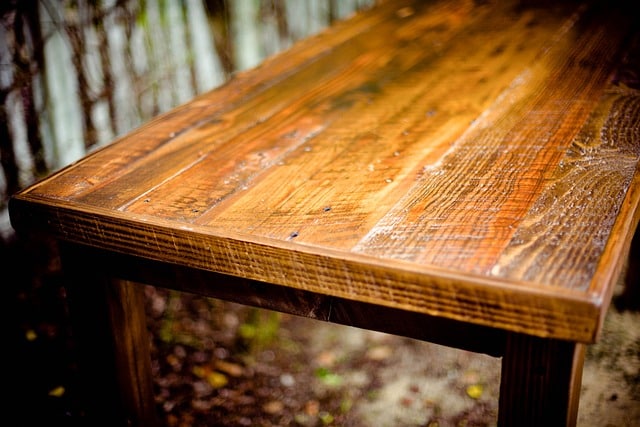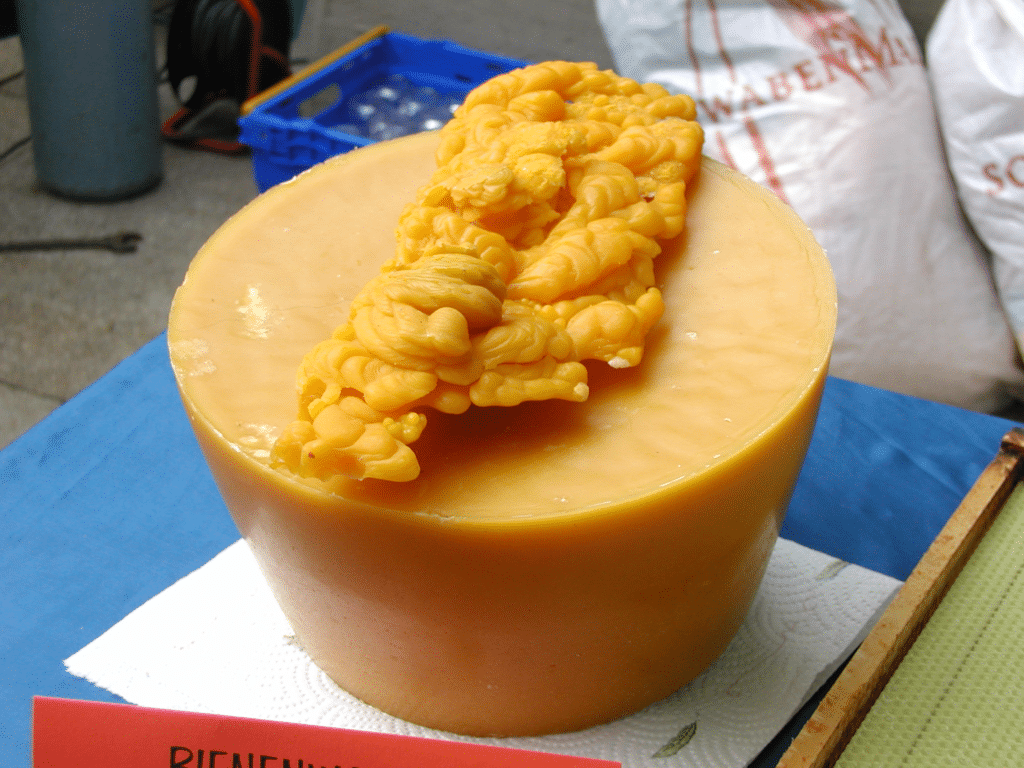Introduction – Zero-Waste And Furniture Maintenance
One way to a zero waste, low carbon emission lifestyle is to maximize the use out of older products like furniture rather than buying new ones. This is especially true now that we have access to low cost, widely available furniture which tends not to last very long and ends up in a dump.
The landfill emissions are part of the problem, but of course, the true problem is the consumption in the first place which creates a cycle of generating more of the same cheap furniture and more people buying it. Today we’ll talk about keeping old furniture looking like new.

Furniture Needs To Be Polished Not Only Stained
To get more use out of old wood furniture like shelves, tables, chairs, you want to protect the surface of the material and also make it look great. You don’t want it to look like it has been sitting in storage for years on end, much less be damaged by dust or other things that can cause problems for your lovely pieces of furniture.
Sure the surface is still stained a nice color but over time that stain will dull and the surface is no longer new looking. One way to help keep your gorgeous pieces of furniture looking as new as possible is with a good polish.
You may think that a simple polish isn’t going to do much for you or your piece of furniture but this just isn’t true at all! In fact, polishing can actually protect against damage and keep the wood looking shiny and beautiful with a little efort.
DIY Your Own Furniture Polish And Natural Furniture Polishes
We’re going to take it one step further. Not only will we restore old furniture, we’re going to make our own natural polish, and we’re going to consider eco-friendly alternatives. The great thing about making your own furniture polish at home is that it’s cheap, easy, and quick. You can make it in under a half an hour and have a product that you can use on multiple types of furniture.
So what are the benefits? Well besides being natural, homemade cleaners are also non-toxic so they’re safe for humans and pets alike! They don’t contain any harmful chemicals like acetone or ammonia which means they won’t damage your skin or lungs like some commercial brands do – yay!
How To Make Your Safe And Natural Furniture Polish At Home
Take a look at our 5 ideas for a home made furniture polish.
1. Simple Eco-friendly Furniture Polish
This recipe is quick and easy, using common household ingredients. It’s great for routine maintenance and adding a quick shine to your furniture. It’s also a really great base for the ideas 4-5 below.
Ingredients:
- 1 cup of Olive Oil (or any other vegetable oil)
- 1/4 cup of Lemon Juice
- 10-15 drops of Lavender Essential Oil (or any other preferred essential oil)
Instructions:
- Mix the olive oil and lemon juice together in a glass jar.
- Add in the lavender essential oil and stir until well combined.
- Apply a small amount of the mixture to a soft cloth and rub it onto your wooden furniture in circular motions.
- After allowing the mixture to sit for a few minutes, buff the furniture with a dry cloth for a shiny finish.
The oil is protective because it moisturizes and softens the wood, and the lavender oil confers a scent. Lemon juice is included due to its properties as a natural cleaner because it’s acidic. This acidity helps break down grime and dirt on your furniture. It’s especially good for handling sticky spots or stains. The natural oils in the lemon juice help to bring out the shine in wooden furniture, adding a fresh, clean glow to the surfaces it’s used on.
Remember to store this mixture in a cool, dark place when not in use to keep the oil from turning rancid.
2. Beeswax and Lemon Furniture Polish
Beeswax furniture polish is easy to make and will last a long time. Beeswax is a substance made by bees and has been used for by humans for thousands of years as a waterproofing, sealing agent. It’s also environmentally friendly, so it’s perfect for those who want to keep their home safe while still being kind to the planet.

To make beeswax furniture polish:
- Break up and melt refined beeswax in a saucepan on medium heat until it becomes liquid. Refined beeswax means there won’t be particulates of matter inside.
- Make a solution of equal parts turpentine and “boiled linseed oil”. The latter is a chemically treated linseed oil that will dry out faster. Use a glass jar.
- Add the melted beeswax in the same proportion as turpentine (that is, you will end up with 1/3 of each).
- Stir the solution with a wooden spoon to mix thoroughly and let stand somewhere warm for one day.
When applying beeswax furniture polish:
- Move the glass jar of beeswax polish to a cooler place to let it become more solid.
- Or, if its pretty cold where you are, let the polish warm up a bit so it is more useable.
- Use a rag, soft sponge, an old T-shirt, basically any soft clothy material, to dab a little on the furniture.
- Buff the surface really well
You’re done!
3. Natural Wax Polish
To avoid the harsh chemicals found in most commercial polishes, you can also use a natural wax polish. These types of polishes are made from beeswax, olive oil and lemon juice. You will need to heat the ingredients until they are melted, then pour them into a container to cool and harden. Once it is solidified you can apply it to your furniture using a soft cloth.
To clean your furniture simply buff out any spills or marks with this polish as you would with normal household cleaners. If you do not have time for this process then simply wipe down the furniture with warm water instead!
4. Lavender Furniture Polish
Use the DIY recipe we gave above. Lavender furniture polish is a great natural polish and scent. The oil found in lavender has been used for centuries to make all kinds of products, like soaps and candles. It also works well as an insect repellent, air freshener and softener! If you’re looking for a safe polish that smells good too, this is the one to try first.
5. Lemon Oil Furniture Polish
Use the DIY recipe we gave above but substitute in the lemon oil for lavender oil. Lemon oil is a great natural furniture polish because it’s safe and effective. Lemon oil is not toxic or harmful to the environment, nor will it harm your family or pets. Because lemon oil is made from lemons, you don’t have to worry about using an artificial product on your furniture. Lemon oil can be made at home with items that are readily available in most grocery stores and kitchen cabinets.
6. Almond Oil Furniture Polish
Almond oil is a great natural polish for wood furniture. It also works well on hardwood floors, leather furniture, and fabrics. Almond oil can be used in place of wax or other polish compounds on your wooden furniture if you want to avoid chemicals and petroleum-based ingredients that are often found in these products.
Additional Tips For Making Your Own

1. Safety: Make sure to use ingredients that are safe and non-toxic. Avoid harsh chemicals and solvents, and wear gloves and a face mask when mixing and applying polishes.
2. Cost: Choose ingredients that are cost-effective and readily available.
3. Ease of Use: Select ingredients that are easy to mix and apply.
4. Compatibility: Make sure the ingredients used are compatible with the type of furniture being polished.
5. Shine: Select ingredients that will produce a glossy, protective finish.
6. Protection: Choose ingredients that will protect the furniture from dirt and dust.
7. Smell: Select ingredients that will give off a pleasant smell.
How To Take Care Of Furniture Thats Been Polished
After you’ve given your furniture a good polish, it’s important to take care of it. You don’t want the polish to wear off or become sticky and attract dust. To maintain your handiwork, you should use a soft cloth (such as an old t-shirt) that has been moistened with water or a mild soap solution to wipe down surfaces before they dry completely.
First, a clean cloth dampened with water will remove any remaining polish residue and keep your furniture looking great.
Second, we’ll tell you about corn starch. Use a dry cloth or microfiber cloth to dust off any dirt that may be on the surface of the wood piece. Then sprinkle some corn starch onto a rag and rub it into the top layer of the wooden item until it’s well coated with corn starch paste. Let this sit overnight so that the paste can soak in deeply into all cracks within its structure before rubbing off tomorrow morning (you may need two rags).
Finally, use another dry rag or soft scrub brush (old toothbrushes work great) dipped into warm water mixed with dish soap to scrub away any leftover residue from yesterday’s application as well as any other dust particles; rinse off any excess moisture using clear water from your sink sprayer then dry thoroughly using another dry cloth before placing back within reachable distance from where you started cleaning!
Conclusion
As you can see, there are some great tips and tricks to keep your furniture looking great. With so many eco-friendly products on the market, you can really make a difference in how our planet is treated.
